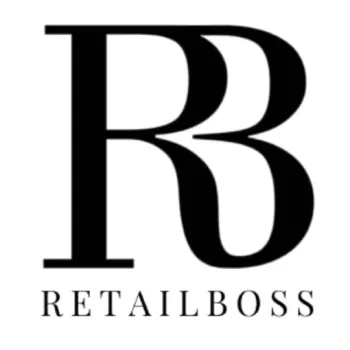Brick and mortar retail has been around for centuries, but it has evolved with time. The term “brick and mortar” (also sometimes used as “bricks and mortar”) was created in contrast to online shopping or e-commerce. Before the internet grew large enough for online retail to become convenient and profitable, storefronts were just that — retail stores, outlets, storefronts, or just shops. While e-commerce has been on the rise over the last decade or so, brick and mortar remains an undeniably successful strategy for retailers. This blog post will walk you through how the brick and mortar business model works, examples of successful retailers with their own shops, and how to open a brick and mortar store of your own.
- Types of Brick-and-Mortar Stores
- Department Stores
- Specialty Stores
- Convenience Stores
- Grocery Stores & Supermarkets
- Drugstores
- Superstores
- Discount & Extreme Discount Stores
- Advantages and Disadvantages of Brick-and-Mortar Stores
- How Brick-and-Mortar Businesses are Adapting
- The Future of Brick-and-Mortar Retail
Definition of Brick-and-Mortar
Brick and mortar retail is a physical retail location where business owners showcase their products using a physical storefront. Customers then visit the store to browse items, talk with sales representatives, try on or test products, and purchase goods. It is a colloquial term that refers to retail stores and offices that customers can visit in person, in comparison to online stores without a customer-facing storefront.
History and Evolution of Brick-and-Mortar
The history of brick and mortar retail dates back to ancient times when merchants would sell their goods in markets or bazaars. In the Middle Ages, the concept of the storefront began to emerge, and by the 19th century, department stores began to dominate the retail landscape. Today, brick and mortar stores can be found in shopping malls, town centers, city streets, or the outskirts of small communities. Despite the shift towards online shopping that was further emphasized with the COVID-19 pandemic, brick and mortar retail stores continue to grow.
Types of Brick-and-Mortar Stores
There are many different types of brick-and-mortar stores, each serving a specific need or theme. Here are seven common types of brick-and-mortar stores:
Department Stores
Department stores are made up of multiple departments, each offering products revolving around a specific need or theme. Some common departments found in department stores include clothing, electronics, home goods, and beauty products. Clothing departments typically offer a wide range of apparel options, from casual wear to formal attire, while electronics departments may sell everything from computers to home theater systems. Home goods departments often feature furniture, bedding, and kitchenware, while beauty product departments offer skincare, makeup, and haircare products. Other departments may include toys, sports equipment, and pet supplies. With so many options available, department stores can be a one-stop-shop for all your shopping needs.
Specialty Stores
Specialty stores focus on a specific product category or niche market, such as pet supplies or sporting goods. These stores often carry a wider range of products within their niche than general retailers, and their employees tend to have a higher level of expertise in the products they sell. For example, a pet store may carry not only food and toys but also specialized grooming tools and training aids. Similarly, a sporting goods store may offer equipment for specific sports, such as baseball or soccer, and knowledgeable staff who can help customers select the right gear for their needs. Shopping at specialty stores can be a great way to find unique or hard-to-find products and to receive personalized service from experts in the field.
Convenience Stores
Convenience stores offer a small selection of everyday items, usually located in urban areas for quick and easy shopping.. These stores are designed to cater to the needs of customers who are looking for a quick purchase without having to go through the hassle of visiting a larger supermarket. In addition to the usual range of snacks and beverages, convenience stores often stock basic household items such as cleaning supplies, toiletries, and over-the-counter medications. Many convenience stores also have a small selection of fresh produce, dairy products, and frozen foods. With their extended hours of operation, convenient locations, and fast checkout times, convenience stores have become an essential part of modern life for many people.
Grocery Stores & Supermarkets
Grocery stores and supermarkets offer a wide range of food and household items, often at competitive prices. They are an essential part of our daily lives, providing us with the convenience of buying everything we need in one place. In addition to staples like fruits, vegetables, meats, and dairy products, many stores now offer organic and locally sourced goods. Supermarkets have also expanded to include prepared foods, bakery items, and even sit-down restaurants. With the rise of online shopping, some stores now offer home delivery or curbside pickup, making grocery shopping more convenient than ever before.
Drugstores
Drugstores offer a mix of pharmaceuticals, health and beauty products, and convenience items, such as snacks and drinks. They are often a one-stop-shop for customers who need to pick up multiple items at once. In addition to over-the-counter medications, drugstores may also offer prescription services, allowing customers to order and receive their medication without having to go to a separate pharmacy. Many drugstores also have a photo center where customers can print photos or create personalized photo gifts like calendars or mugs. Some drugstores even offer basic healthcare services such as a pharmacy equipped with flu shots or blood pressure screenings.
Superstores
Superstores offer a large selection of products across multiple categories, such as Walmart or Target. These stores have become increasingly popular over the years due to their convenience and affordability. In addition to offering a wide range of products, superstores often provide additional services like pharmacy, photo printing, and grocery pickup. With their massive size and buying power, superstores are able to offer competitive prices and discounts on many items, making them a go-to destination for many shoppers. Despite some criticism for their impact on small businesses and local economies, superstores continue to dominate the retail landscape and are a staple in many communities.
Discount & Extreme Discount Stores
Discount and extreme discount stores offer heavily discounted products, often overstock or clearance items.. These stores are a great option for shoppers who want to save money on their purchases and don’t mind buying items that may be slightly outdated or not in perfect condition. Many discount stores also offer a wide variety of products, from clothing and electronics to home goods and grocery items. While the prices at these stores may be lower than at traditional retailers, it’s important to keep in mind that the quality of the products may not be as high.
Advantages and Disadvantages of Brick-and-Mortar Stores
As with any business model, there are pros and cons to brick-and-mortar stores.
Advantages of Brick-and-Mortar Stores
- In-Person Shopping ExperienceBrick-and-mortar stores offer customers a unique shopping experience that online retailers cannot replicate. Customers can touch, feel, and try on products before making a purchase.
- Inspection of ProductsCustomers can inspect the quality of the products they are interested in and ensure that they meet their standards before purchasing them.
- Convenience for Some ProductsFor certain products, such as groceries or pharmaceuticals, in-person shopping is often more convenient than waiting for delivery or paying for shipping.
Disadvantages of Brick-and-Mortar Stores
- Higher Overhead CostsBrick-and-mortar stores often have higher overhead costs compared to online retailers, including rent, utilities, and employee salaries.
- Less FlexibilityPhysical stores have limited space for inventory and are constrained by their location, making it difficult to adapt to market trends or customer demands quickly.
- Competing with Online RetailersBrick-and-mortar stores must compete with the convenience and lower prices often found in online shopping.
How Brick-and-Mortar Businesses are Adapting
Despite the challenges, many brick-and-mortar businesses are finding ways to adapt and thrive in the modern retail landscape. Here are some strategies they are implementing:
Simultaneous, Connected Web-Based Businesses
Many physical retailers are embracing e-commerce and creating an online presence to reach a broader audience and offer customers a seamless shopping experience between channels. This trend has been accelerated by the pandemic, as many consumers have turned to online shopping due to store closures and safety concerns. However, while e-commerce presents new opportunities for retailers, it also comes with its own set of challenges. One of the main challenges is the need to effectively manage inventory across multiple channels.Retailers must ensure that their online and offline inventory levels are synced in real-time to avoid stockouts or overstocks. Additionally, they must consider the logistics of fulfilling online orders, including shipping and returns. Despite these challenges, many retailers are finding success in the e-commerce space by leveraging data analytics and investing in user-friendly online platforms.
Incorporating Technology
Brick-and-mortar stores are using technology like mobile apps, digital signage, and augmented reality to enhance the in-store experience and appeal to tech-savvy customers. For instance, some retailers are using mobile apps to allow customers to scan items in-store and get more information on the product, such as reviews or alternative options. Others are implementing digital signage that can display personalized ads based on customer data or show real-time inventory levels.Additionally, some stores are experimenting with augmented reality, which allows customers to visualize how a product would look in their home or on their body before making a purchase. Integrating technology into the physical shopping experience, retailers hope to provide a more convenient, personalized, and engaging experience for their customers.
Creating Unique Experiences
Retailers are focusing on creating unique, memorable experiences that can’t be replicated online, such as in-store events, workshops, or personalized services. One example of this trend is the rise of “retailtainment,” where shopping becomes a form of entertainment. Retailers are incorporating interactive elements like virtual reality, augmented reality, or gamification to engage customers in fun and memorable experiences. For instance, some stores have created immersive environments that transport shoppers to different worlds or eras, while others offer personalized styling sessions with fashion experts or beauty consultations with makeup artists.
The Future of Brick-and-Mortar Retail
While e-commerce continues to grow, brick-and-mortar retail is far from disappearing. Physical stores offer unique advantages that online retailers cannot replicate, such as personalized customer service, the ability to touch and try products, and the opportunity to create memorable in-store experiences. Successful brick-and-mortar retailers will continue to adapt and find ways to integrate technology, provide omnichannel experiences, and appeal to modern consumers.

















